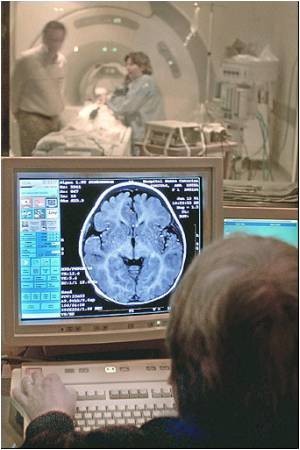Study says residing in a psychosocially hazardous neighborhood is associated with worse cognitive function in older age for persons with the apolipoprotein E

Brian K. Lee, Ph.D., of Drexel University School of Public Health, Philadelphia, and colleagues analyzed data from the Baltimore Memory Study on 1,124 urban residents between 50 and 70 years of age to assess the association between living in a psychosocially hazardous neighborhood and cognitive function in aging. Patients were mostly white (53.8 percent) or African American (41.5 percent), and resided in any of the 63 Baltimore neighborhoods included in the study. Psychosocially hazardous neighborhoods are defined as areas that "give rise to a heightened state of vigilance, alarm, or fear in residents that may lead to a biological stress response."
Overall, 30.4 percent of participants possessed at least one ε4 allele, however the presence of the APOE ε4 differed by race/ethnicity, with 37.3 percent of African Americans ε4 positive compared with 24.7 percent of non-African Americans.
Before adjustment for outside factors (such as race, sex, wealth, etc.), participants living in the most psychosocially hazardous neighborhoods performed substantially worse in all seven cognitive domains tested (language, processing speed, eye-hand coordination, executive functioning, verbal memory and learning, visual memory, and visuoconstruction). In adjusted analysis with both neighborhood and APOE terms, persons living in the most psychosocially hazardous neighborhoods scored lower only on eye-hand coordination than other participants. APOE ε4 was associated with worse performance in executive function and visuoconstruction (ability to organize and manually manipulate spatial information, usually in the reproduction of geometric figures).
Compared with persons negative for APOE ε4 allele in less psychosocially hazardous neighborhoods, those who are negative for the allele and were living in the most psychosocially hazardous neighborhoods did not perform worse in any of the tested domains, nor did persons positive for APOE ε4 who were living in less psychosocially hazardous neighborhoods. However, persons positive for APOE ε4 living in the most psychosocially hazardous neighborhoods performed significantly worse than all three groups in processing speed, eye-hand coordination, executive functioning and visuoconstruction.
"Our findings provide evidence that among persons with the APOE ε4 allele, cognitive performance in processing speed and executive function was significantly worse for persons residing in neighborhoods with higher levels of psychosocial hazards, with additional suggestive evidence for eye-hand coordination," the authors conclude. Additionally, "for genetically vulnerable persons, a psychosocially hazardous neighborhood environment may be detrimental for cognitive function in aging."
Advertisement
Source-Eurekalert








